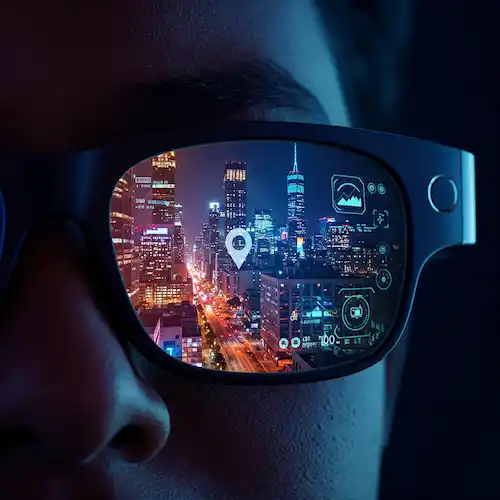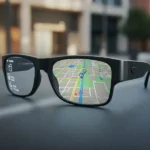Video on the Go: Watch Videos on Smart Glasses
One of the most intriguing possibilities that smart glasses present is the ability to watch videos on smart glasses in a more personal and discreet way. Imagine watching a quick tutorial while you’re working on a project, catching up on the news during your commute, or even enjoying a movie on a long flight – all without having to hold a phone or tablet. While the experience isn’t quite like having a personal cinema strapped to your face, smart glasses offer a unique and increasingly viable way to watch videos.
However, navigating the landscape of video playback on these devices can be a bit tricky, as compatibility, features, and user interfaces vary significantly between models. This guide will delve into the various methods and considerations for watching videos on smart glasses, helping you understand the capabilities of your device and maximize your viewing experience. From built-in players and companion apps to streaming services and phone mirroring, we’ll explore the different avenues available and provide tips for optimizing your viewing experience, so you can make the most of this exciting technology.
It’s awesome you’re looking to maximize your smart glasses experience! Watching videos on them can be a bit different than on your phone or TV, but it can be really cool. Here’s a breakdown of how it generally works and things to keep in mind:
Compatibility is Key
- Not all smart glasses are created equal: Some are designed more for quick notifications and hands-free calls, while others are geared towards a more immersive visual experience. Check your smart glasses’ specs to see if video playback is a primary feature.
- Content sources matter: Some glasses might primarily work with videos you’ve recorded yourself, while others might stream from platforms like YouTube or have limited app compatibility.
Methods to Watch Videos on Smart Glasses
- Built-in Players: Some smart glasses have a basic video player that can handle files stored on the device or streamed from a connected phone.
- Companion Apps: Many smart glasses rely on a companion app on your smartphone. You might select videos on your phone, and they’ll play on the glasses’ display.
- Streaming Services: A few higher-end models might have limited access to streaming apps like YouTube directly on the glasses. This is less common due to processing power and interface challenges.
- Phone Mirroring: In some cases, you might be able to mirror your phone’s screen to your smart glasses, allowing you to watch anything playing on your phone.
Factors to Consider
- Display Type: Smart glasses displays are small and close to your eye. The viewing experience won’t be like a big screen, but it can be convenient for personal viewing.
- Battery Life: Video playback can be a battery drain. Keep an eye on your battery level, especially for longer videos.
- Comfort: Make sure your glasses fit well, as extended viewing could cause discomfort if they’re not properly adjusted.
- Audio: Some glasses have built-in audio, while others might require you to use headphones.
Tips for a Better Experience
- Optimize Settings: Adjust brightness and focus for comfortable viewing.
- Find the Right Content: Videos with clear visuals and less complex scenes tend to work best.
- Minimize Distractions: If your glasses have a see-through display, try to watch in a less distracting environment.
To get the most specific instructions, here’s what I recommend:
- Check your user manual: It should have detailed information about video playback on your specific model.
- Visit the manufacturer’s website: Look for FAQs or tutorials related to video features.
- Search online: See if other users have shared tips or experiences with your smart glasses model.
Frequently Asked Questions: Watch Videos on Smart Glasses
Here are some common questions about watching videos on smart glasses:
General Video Playback:
Q: Can I watch any video on my smart glasses?
A: Not necessarily. Compatibility depends on your smart glasses’ capabilities. Some models support various video formats, while others are limited. Check your user manual for supported formats and playback methods.
Q: How do I actually play a video on my smart glasses?
A: There are several ways: * Built-in Player: Some glasses have a basic player for locally stored files. * Companion App: Many use a smartphone app to select and control video playback on the glasses. * Streaming Apps: A few models may support limited streaming services directly. * Phone Mirroring: Some allow mirroring your phone’s display, letting you watch anything playing on your phone.
Q: My smart glasses don’t seem to support video playback. What can I do?
A: If video playback isn’t a listed feature, it’s likely your model doesn’t support it. Check the specifications or contact the manufacturer to confirm.
Q: The video quality on my smart glasses isn’t great. Why?
A: Smart glasses displays are small and close to the eye. The viewing experience is different from a large screen. Also, video resolution and compression affect quality.
Content Sources:
Q: Can I watch Netflix/YouTube/other streaming services on my smart glasses?
A: It depends on the model. Some high-end glasses might have limited app support, but this is less common due to hardware limitations. Phone mirroring might be an option if your glasses support it.
Q: Can I watch videos stored on my phone on my smart glasses?
A: Usually, yes. Many smart glasses use a companion app on your phone to select and play videos stored on your device.
Q: Can I watch videos I’ve recorded with my smart glasses on the device itself?
A: Some models allow you to review videos you’ve recorded directly on the glasses. Check your user manual for instructions.
Technical Issues:
Q: My video is lagging or stuttering. What can I do?
A: This could be due to network connectivity (if streaming), file size, or processing power limitations. Try reducing the video quality, closing other apps, or ensuring a stable connection.
Q: My smart glasses’ battery drains quickly when watching videos. Is this normal?
A: Yes, video playback is power-intensive. Keep an eye on your battery level and consider adjusting settings like brightness to conserve power.
Q: The video isn’t filling the whole display area. Is there a way to adjust the screen size?
A: Some models may offer limited display adjustments. Check your user manual for options.
Other Considerations:
Q: Can I wear my regular glasses while using smart glasses for video playback?
A: It depends on the design of both your regular glasses and the smart glasses. Some smart glasses are designed to fit over prescription glasses, while others may not be compatible.
Q: Is it safe to watch videos on smart glasses while walking or driving?
A: It’s generally not recommended. Be aware of your surroundings and prioritize safety, especially when engaging in activities that require your full attention.
Q: How do I control the volume while watching videos on my smart glasses?
A: Volume controls vary by model. Some use buttons on the frame, while others rely on the companion app or voice commands.
Q: Can other people see what I’m watching on my smart glasses?
A: The display is typically designed for the wearer’s view. However, depending on the brightness and surrounding lighting, it might be possible for someone very close to see a faint image.
Additional Helpful Information:
Some details about how to use smart glasses – How to Use Smart Glasses? – A Beginners Guide
Use your smart glasses for photos and videos — How to Capture Photos and Videos with Smart Glasses?
Authoritative External Resources
Meta (Ray-Ban Meta & Oakley Meta Smart Glasses)
How to use AI glasses – Meta Store: This support page explains the functionality of the glasses, including capturing and importing photos and videos to the Meta AI mobile app (formerly Meta View app). This is the key process for viewing content you’ve created on your glasses.
https://www.meta.com/help/ai-glasses/289032793766239
Ray-Ban Meta Wayfarer AI Glasses and Sunglasses: The official product page highlights the “Listen” feature, which includes the ability to listen to content from a phone connected via Bluetooth. While it doesn’t describe watching videos on a display, it confirms that you can listen to the audio from videos played on your phone.
https://www.meta.com/ai-glasses/wayfarer
Learn more about Android XR: This official Google page discusses the future of Android for extended reality (XR) devices, including glasses. It mentions features like “Your personal, immersive theater – anywhere,” indicating that video playback and other immersive content are a core part of the platform’s vision.
Google Glass Help Center: The support page for Google Glass discusses the device’s compatibility with both Android and iPhone devices, as well as its ability to access and display content. While the Google Glass Enterprise Edition is more focused on industrial applications, its support pages can provide insights into how the technology handles media.
https://support.google.com/glass/answer/3064189?hl=en
Other Resources
Vuzix Corporation: Vuzix is a leader in enterprise smart glasses. Their website provides detailed product support and technical documentation for their models, many of which feature more advanced video playback and augmented reality displays. You can find guides on their support page.
https://www.vuzix.com/products/product-support
Apple Vision Pro: While technically a mixed-reality headset, Apple Vision Pro is a significant product in the wearable tech space. Its official page showcases how it can transform any room into a personal theater, allowing you to watch movies and shows in Spatial Audio.




